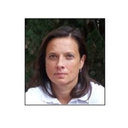Arginase pathway in human endothelial cells in pathophysiological conditions.
Raktažodžiai
Santrauka
Objective. - Arginase is a nitric oxide synthase-alternative pathway for l-arginine breakdown leading to biosynthesis of urea and l-ornithine. Arginase pathway is inducible by inflammatory molecules-such as cytokines and bacterial endotoxin-in macrophages and smooth muscle cells. The presence of an arginase pathway in human endothelial cells and its possible modulation by inflammation are unknown. Methods. - We have: (i) characterised arginase pathway in terms of activity, isoform type and gene expression in a primary human umbilical vein endothelial cells (HUVEC) line; (ii) evaluated arginase functional role in cell proliferation with the aid of l-norvaline, an arginase inhibitor and (iii) determined the effects of tumour necrosis factor-alpha and endotoxin on arginase pathway. Results. - HUVEC showed a baseline arginase activity and expression of both arginase isoforms (arginase I and II (A-I and A-II, respectively)) which resulted in l-norvaline-inhibitable cellular polyamine synthesis. The baseline arginase activity is important for HUVEC proliferation as cell cycle analysis and nuclear factor Ki-67 immunostaining revealed. Following incubation with inflammatory molecules, arginase activity increased but HUVEC cell cycling decreased. Conclusions. - A-I and A-II are constitutively expressed in HUVEC where they take part to the regulation of cell cycling. Although arginase activity is positively modulated by inflammatory molecules, it is insufficient to counteract the overall cell cycling inhibiting effects of inflammation.


